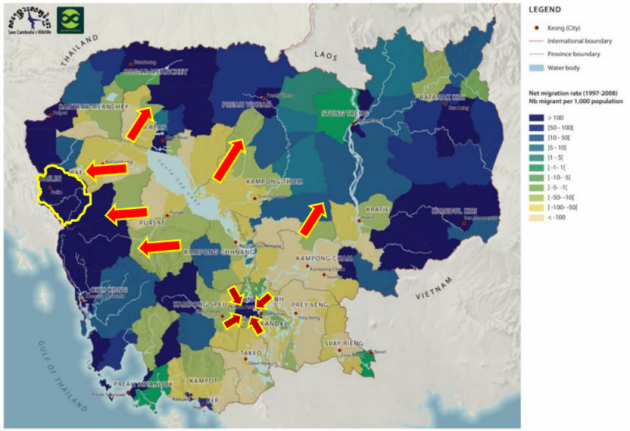Underlying factors
In-migration is the main underlying factors[1]. The census data in 2008 revealed that the net migration[2] (deduction of in-migration with out-migration and divide total population) in the study area highlighted in the dark blue color was more than 100 of 1000 population. In total, the in-migrant was about 50-60% of total population, and more than 70% of them had occupation on farming activities. This signified obviously that the main purpose of in-migration was to own and secure a plot of land.

High demand of raw materials to feed the fast growing agro-industrial sector in the region drove the increasing the price of agricultural produces which was an efficient driver for the farmers to intensify the clearance as soon as possible. The last update of FAOSTAT showed the produce price index[3] in Cambodia increased from 50 in 2002 to 225 in 2012, almost 5 folds in 10 years. |
The expansion of cultivated area was possible thanks to the access of agricultural machineries such power tillers and tractors. The data of provincial department of agriculture presented a sharp increase of power tillers and tractors from late 2000s in the studied area.







